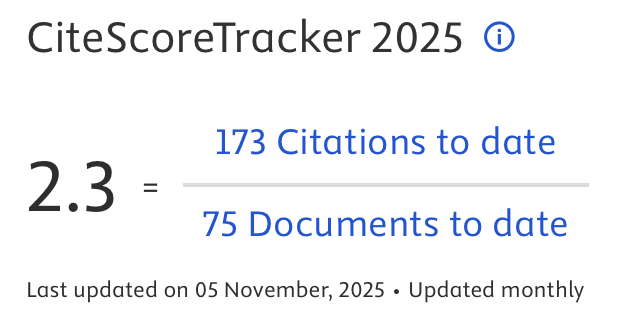KITAB TADABBUR AL-QUR’AN KARYA BACHTIAR NASIR DALAM PERSPEKTIF EPISTEMOLOGI
DOI:
https://doi.org/10.14421/qh.2019.2001-02Keywords:
Tadabbur, Bachtiar Nasir, Tafsir, EpistimologiAbstract
This study aims to examine the epistemology of the tadabbur al-Qur’an by Bahctiar Nasir. This book can be said as the only work Ulama’ of Indonesian. The tadabbur al-Qur'an is almost rarely found in the works of Ulama and al-Qur’an experts, both classical and modern, the scholars more often use the term tafsir, whereas many are found in the text of the Quran is a command to “reflection” not interpret. This research is a library research and field research with a descriptive-analytical method to reveal the epistemology of tadabbur al-Qur’an by Bachtiar Nasir. The conclusions of this study, namely: first, the concept of tadabbur al-Qur’an by Bachtiar Nasir is not much different from the books of commentary in general, the difference is only the addition of reflection or tadabbur at the end of each interpretation of the verse. This tadabbur al-Qur’an book when referring to the 10 steps of the tadabbur concept cannot be categorized as a tadabbur al-Qur’an book because both the content and the systematic writing are not much different from other interpretations.
Keyword: Reflection, Bachtiar Nasir, Tafsir, Epsitemology
 Abstract viewed: 1494 times
|
Abstract viewed: 1494 times
|
 PDF downloaded = 7103 times
PDF downloaded = 7103 times
References
Alûsî (al), Maḥmûd bin Abd Allah. Rûḥ al-Ma’ânî fî Tafsîr al-Qur’an al-‘Aẓîm wa al-Sab‘u al-Mathânî. Beirut: Dâr al-Kutub al-‘Alamiyah, 2009.
Baidan, Nashruddin. Metodologi Penafsiran al-Qur’an. Yogyakarta: Pustaka Pelajar, 1997.
Departemen Agama RI. al-Qur’ân dan Terjemahannya. Jakarta: al-Huda Kelompok Gema Insani, 2002.
Dhahabî (al), Muḥammad Ḥusain. al-Tafsîr wa al-Mufassirûn, Vol. 1 (Kairo: Dâr al-Kutub al-Ḥadithah, 1961), hlm. 12.
Jawzîyyah (al), Muḥammad bin Abû Bakr bin al-Qayyim. Badâ’î al-Tafsîr. Riyad: Dâr ibnu Jauzî 1427 H.
Jawziyah (al), Muḥammad bin Abû Bakr bin al-Qayyim. Zâdu al-ma’Âd fî Hadî Khayrâ al-‘Îbâd. Beirut: Dâr al-Kutub, 2002.
Nasir, Bachtiar. Meraih Mutiara al-Qur’an. Jakarta: Gema Insani, 2013.
Nasir, Bahtiar. Tadabbur al-Qur’ân. Jakarta: Gema Insani, 2013.
Natsir, Ridlwan. Memahami al-Qur’an; Perspektif Baru Tafsir Muqarin. Surabaya: CV. Indera Medika, 2003.
Qat}t}ân (al), Mannâ’ Khalîl. Mabâhith fî Ulûm al-Qur’an. Beirût: Dâr al-Kitab al-Islamy, ttp.
Ruwayshid (al), Asma’ binti Rashîd. HâKadhâ ‘Asyu Ma‘a al-Qur’ân. Riyad: tt, 2011.
Shiddieqy (ash), M. Hasbi. Ilmu-ilmu al-Qur’an: Media-media Pokok dalam Menafsirkan al-Qur’an. Jakarta: Bulan Bintang, 1978.
Tirmidhî (al), Muḥammad bin ‘Isâ. Sunan al-Tirmidhi. Beirut: Dâr al-Gharb al-Islâmî, 1998.
Zarkashî (al), Muḥammad bin Bahâdir. al-Burhân fî ‘Ulûm al-Qur’an. Lebanon: Dâral-Qutub al-Ilmiyah: 2011.
Downloads
Published
How to Cite
Issue
Section
License
Publishing your paper with Jurnal Studi Ilmu-ilmu al-Qur'an dan Hadis means that the author or authors retain the copyright in the paper. Jurnal Studi Ilmu-ilmu al-Qur'an dan Hadis uses license CC-BY-NC-ND or an equivalent license as the optimal license for the publication, distribution, use, and reuse of scholarly works. This license permits anyone to copy and redistribute the material in any medium or format and must give appropriate credit, provide a link to the license, and indicate if changes were made. If you remix, translate, transform or build upon the material you may use it for private use only and not for distribution. Jurnal Studi Ilmu-ilmu al-Qur'an dan Hadis granted an exclusive non-commercial reuse license by the author(s), but the author(s) are able to put the paper onto a website, distribute it to colleagues, give it to students, use it in your thesis, etc, so long as the use is not directed at a commercial advantage or toward private monetary gain. The author(s) can reuse the figures and tables and other information contained in their paper published by Jurnal Studi Ilmu-ilmu al-Qur'an dan Hadis in future papers or work without having to ask anyone for permission, provided that the figures, tables, or other information that is included in the new paper or work properly references the published paper as the source of the figures, tables or other information, and the new paper or work is not direct at a private monetary gain or commercial advantage.
Jurnal Studi Ilmu-ilmu al-Qur'an dan Hadis journal Open Acces articles are distrubuted under the Creative Commons Attribution-NonCommercial-NoDerivatives 4.0 International (CC BY-NC-ND 4.0). Article can be read, copy and redistribute the material ini any medium or format under the following conditions:
Attribution — You must give appropriate credit, provide a link to the license, and indicate if changes were made. You may do so in any reasonable manner, but not in any way that suggests the licensor endorses you or your use.
NonCommercial — You may not use the material for commercial purposes.
NoDerivatives — If you remix, transform, or build upon the material, you may not distribute the modified material.









